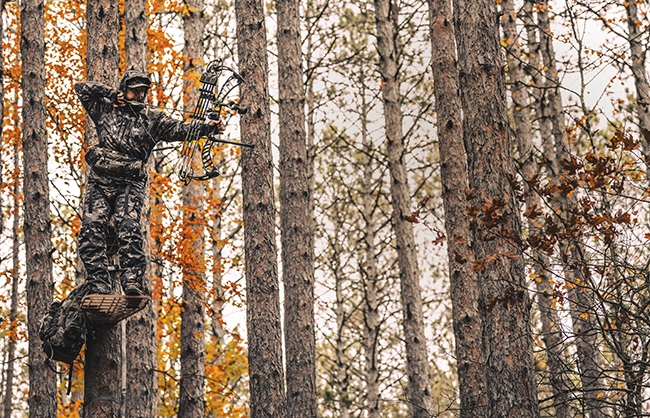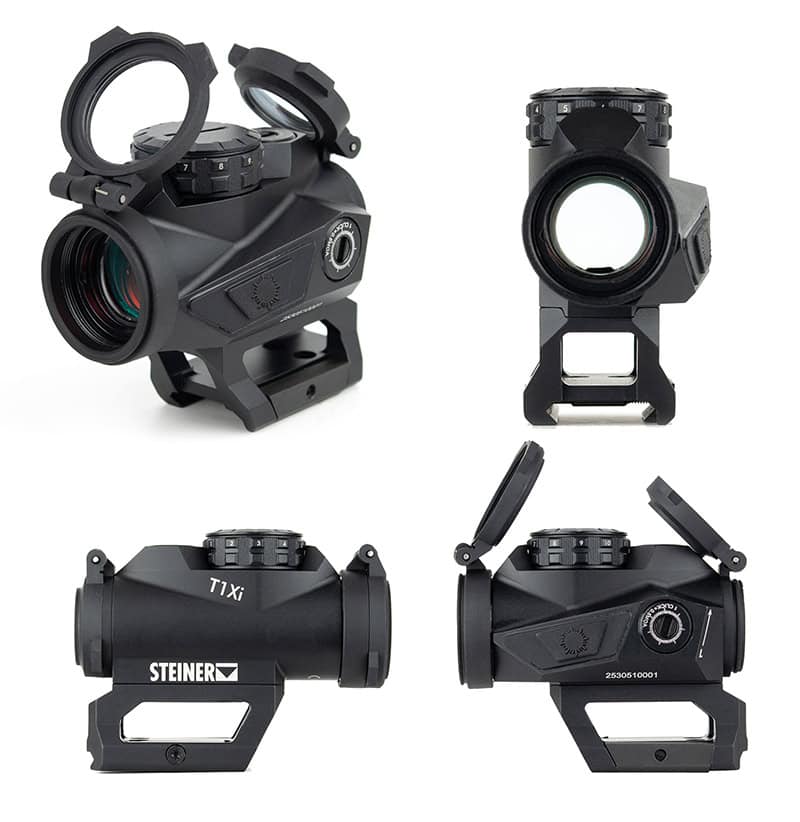Bowhunting & Beyond
Navigating The Evolving Archery Market
The archery industry is experiencing a significant transformation, fueled by technological advancements and changing consumer preferences. For brick-and-mortar retailers and archery ranges, staying ahead of these trends is crucial to attract and retain customers.
Let’s delve into the current trends shaping the market and how you can leverage these insights to boost business.
Technological Advancements
Technology is revolutionizing the archery world. Compound bows and crossbows have seen remarkable improvements in recent years, making them more efficient and user-friendly.
Today’s compound bows are lighter, faster and more accurate, thanks to innovations in limb design, riser construction and cam systems. The integration of carbon and other lightweight materials has dramatically reduced the weight of these bows without compromising strength and durability. This makes them more accessible, especially for younger and female archers.
“Aluminum bows are also getting lighter in weight with the ability to keep the price tag easier on some consumers,” said Cody Griffin, promotions manager for Easton Archery.
Compound bow manufacturers are also making moves to make their bows more accessible to the shooter with tuning capabilities the archer can do on his/her own without the need for pro-shop assistance.
Crossbows are seeing even more technological advancements. Modern crossbows are more powerful yet compact and easier to cock. Innovations like advanced cocking mechanisms, such as crank systems and sled designs have made crossbows accessible to a broader range of users, including those with physical limitations. The introduction of reverse-draw technology has enhanced power and accuracy, making crossbows a popular choice for both hunting and target shooting.
Additional innovations such as high-performance broadheads, improved arrow designs and sophisticated sight systems have made bowhunting more accessible and effective, contributing to more successful hunts. Modern equipment has elevated the bowhunting experience, combining tradition with cutting-edge technology.
Bowhunting: A Resurgent Passion
Bowhunting remains a cornerstone of the archery industry, with a dedicated and passionate following. As overall hunting participation has continued to decline, bowhunter participation numbers are on the rise.
From 2011–2021, overall hunting participation declined 1% while bowhunting participation increased by 6%.1
Last year, the Archery Trade Association (ATA) released its 2021 State-by-State Hunting Data — marking the first time the ATA or any other entity has gathered a complete set of state bowhunter estimates.
The ATA worked with state wildlife agencies and partners to determine bowhunter participation numbers in each state during the 2021–22 season. After combining the state totals, the ATA reported America has over 3.7 million licensed bowhunters.
The growth in bowhunting participation can be attributed to several factors, including a desire for a more traditional hunting experience and the challenge it presents compared to firearm hunting. The crossbow market has experienced steady growth from aging bow hunters as well as gun hunters who want to extend their season.
A renewed focus on ethical hunting practices has also contributed to the rise in bowhunting’s popularity. Hunters are increasingly aware of the importance of quick, humane kills and are investing in equipment that ensures precision and reliability.
Dustin Miedema, co-owner of Long Range Archery in Holland, Mich., confirmed: “We’ve seen a growing number of customers who are passionate about ethical hunting. They appreciate the challenge of bowhunting and the skills it requires, and they want the best equipment to support their goals.”
Changes in hunting regulations and the expansion of bowhunting seasons in various states have also opened new opportunities for hunters. Retailers can capitalize on this trend by staying informed about local regulations and stocking the appropriate gear. Offering workshops and seminars on bowhunting techniques and regulations can attract hunters looking to refine their skills and knowledge.
Providing educational opportunities is vital to the industry’s future.
In an article on the organization’s website, ATA Senior Manager of Outreach, Nicole Nash, noted, “COVID had a significant impact on bowhunter education. This fact is reflected by a sharp drop in program participation in 2020, going from over 160,000 students in 2019 to 121,295 students in 2020. Educational offerings and participation are still recovering from that impact, but the trend remains in a positive direction of continuing to increase in participation.”
Participation in bowhunter education classes is not only on the rise, but the number of bowhunter education classes being offered is as well.
This information is important for the industry because if there is an increase in educational offerings and student participation, there will be a higher demand for archery equipment. This not only helps state agencies but manufacturers, retailers and the archery industry as a whole.
Archery’s Growing Appeal
Beyond hunting, archery is gaining traction as both a recreational activity and a competitive sport. Participation rates are climbing, and the number of archery clubs and organizations is on the rise.
Modern compound bows and crossbows have made archery more approachable for families and individuals seeking an engaging outdoor activity. Offering introductory classes and hands-on experiences can convert casual interest into long-term customers.
“We’ve seen a significant uptick in families coming in to try archery together. Offering beginner lessons and family-friendly events has been a great way to introduce more people to the sport and build a loyal customer base,” Miedema shared.
The competitive scene is also thriving, with more participants in local and national tournaments. Organizations like USA Archery and the National Field Archery Association (NFAA) are experiencing membership growth.
“We’ve seen a steady increase in the number of participants in local and national tournaments,” noted Cody Griffin of Easton Archery. “The competitive aspect of archery is a significant draw for many enthusiasts.”
Understanding (And Catering To) Consumer Preferences
Meeting the evolving preferences of today’s archery consumers is essential for success. Consumers are seeking convenience, performance and value in their purchases.
Customization is a significant trend, with archers wanting equipment tailored to their specific needs and preferences. Offering a range of customizable accessories and personalized fitting services can meet this demand.
“At Long Range Archery, we’ve expanded our selection of customizable gear and offer personalized fitting sessions,” said Miedema. “This not only meets the needs of our customers but also enhances their overall experience and satisfaction.”
Besides the increased popularity in crossbows, Miedema mentioned one of the biggest changes in the archery industry is the knowledge of the consumer.
“In the last few years, YouTube and podcasts have helped increase the customer’s technical knowledge. This has them looking for more technical products that usually have a higher retail price,” he said. “The other trend we’ve been seeing has been mobile hunting setups and an increase in hunters who are traveling between states.”
For Easton Archery, front-end components for arrows are hugely popular. Hunters are going to premium half-outs with a lot of weight up front while at the back end, high- performance vanes are in high demand.
“The compound bow market has for sure changed with consumers wanting more ‘high-end equipment.’ Archery has become more than just shooting your bow right before archery season, I think Total Archery Challenge (TAC) and other shoots have driven consumers to pick up their equipment more year-round,” said Griffin.
“The popularity of TAC events has also changed the type of arrows and sights our customers are buying. Instead of a cheap 3-pin sight, they are buying more advanced multi-pin sliders,” added Miedema.
For value-minded consumers, “ready-to-hunt” package deals are appealing. Regardless of the price range, these packages tend to save the consumer a good percentage over buying equipment piece by piece. Bundling cellular trail cam technology and other products that allow individuals to maximize their time afield can help increase archery sales.
It’s also important for retailers to not only understand but embrace the demographic shifts within the archery community.
Engaging younger generations is vital for the future of archery. Programs like the National Archery in the Schools Program (NASP) have successfully introduced thousands of students to the sport. Retailers can support these initiatives by offering youth-specific equipment and hosting youth tournaments and events.
The number of female archers is also increasing, driving demand for equipment designed specifically for women. Bows with adjustable draw lengths and weights, along with accessories catering to female archers, are essential.
“The growth in female participation has been tremendous. Manufacturers and retailers need to recognize this and provide products that meet the needs of women in the sport,” Griffin suggested.
Miedema added, “We’ve seen a noticeable increase in female customers at our store. By stocking bows and accessories that cater to women, we’ve been able to attract and retain this growing segment of the market.”
Marketing & Community Engagement
Effective marketing and community engagement are key to thriving in today’s market.
Leveraging social media and maintaining a robust online presence can enhance visibility and reach. Sharing success stories, showcasing new products, and engaging with customers online builds a loyal community.
“We’ve found social media is a powerful tool for connecting with our customers. By posting regularly and engaging with our followers, we’ve been able to build a strong online community that translates into in-store visits and sales,” Miedema explained.
Hosting events and workshops can attract new customers and retain existing ones. These events provide opportunities for customers to try new equipment, learn from experts and connect with other archery enthusiasts.
The team at Easton Archery believes events and workshops are not only a great way to showcase products but also to foster a sense of community among archers.
Miedema echoed this sentiment.
“Our workshops and events have been incredibly popular. They provide a platform for archers to learn, share experiences and build a sense of camaraderie. It’s also a great way to introduce new products and get immediate feedback from our customers.”
Forming partnerships with local schools, sports clubs and outdoor organizations can also help retailers reach a broader audience. Sponsoring local tournaments and leagues can enhance a retailer’s reputation and visibility within the archery community.
Takeaways
The archery industry is in a dynamic phase of growth and innovation. By staying informed about the latest trends and consumer preferences, brick-and-mortar retailers and archery ranges can position themselves for success. Embracing technological advancements, catering to evolving consumer demands and actively engaging with the community are key.
As Griffin from Easton Archery aptly put it, “The future of archery is bright. With the right strategies and a commitment to meeting the needs of today’s archers, retailers can look forward to a prosperous future in this exciting industry.”





